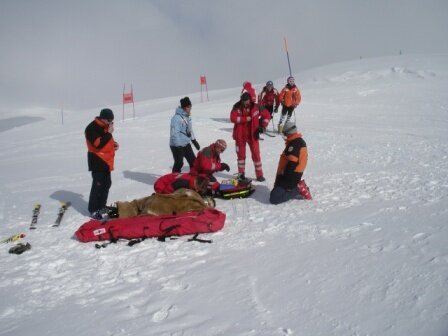Treatment of Dislocations and Fractures

Abstract
Most mountain rescue operations are due to joint injuries and fractures. Treatment of these injuries must follow some basic principes.
The injury affects not only the bone or the joint, but also a complex functional unit that consists of skin, muscles, nerves, blood vessels, ligaments, tendons and bones. Each part of this unit has an important function. In most cases treatment is determined not so much by the injury to the bone itself, but by the injury to another part of this functional unit. Therefore, treatment is directed at the entire functional complexe.
Because mountain rescue operations are often time-consuming, failure to reduce dislocations of joints or displaced fractures may result in serious skin, circulatory or neurological injury. There is often no way in distinguishing fractures in the field. In doubtful cases, injuries should be treated as fractures to prevent further harm to the patient.
The main complication of open fractures is the danger of infection. A bandage should be applied to prevent further bacterial entry into the wound and should be not removed until hospital treatment. It is very important to report the possibility of an open fracture under the bandage when handing over the patient to another care giver.
In most cases it is better to bandage before splinting a limb. Foreign objects in the wound should not be removed. Improper removal can lead to major bleedings or to injuries to surrounding soft structures (e.g. nerves). Protruding foreign objects may to be shortened or bent very carefully, taking caution not to lose the remaining part in the wound.
-----------------------------
Please look at the attached file for the complete recommendation!